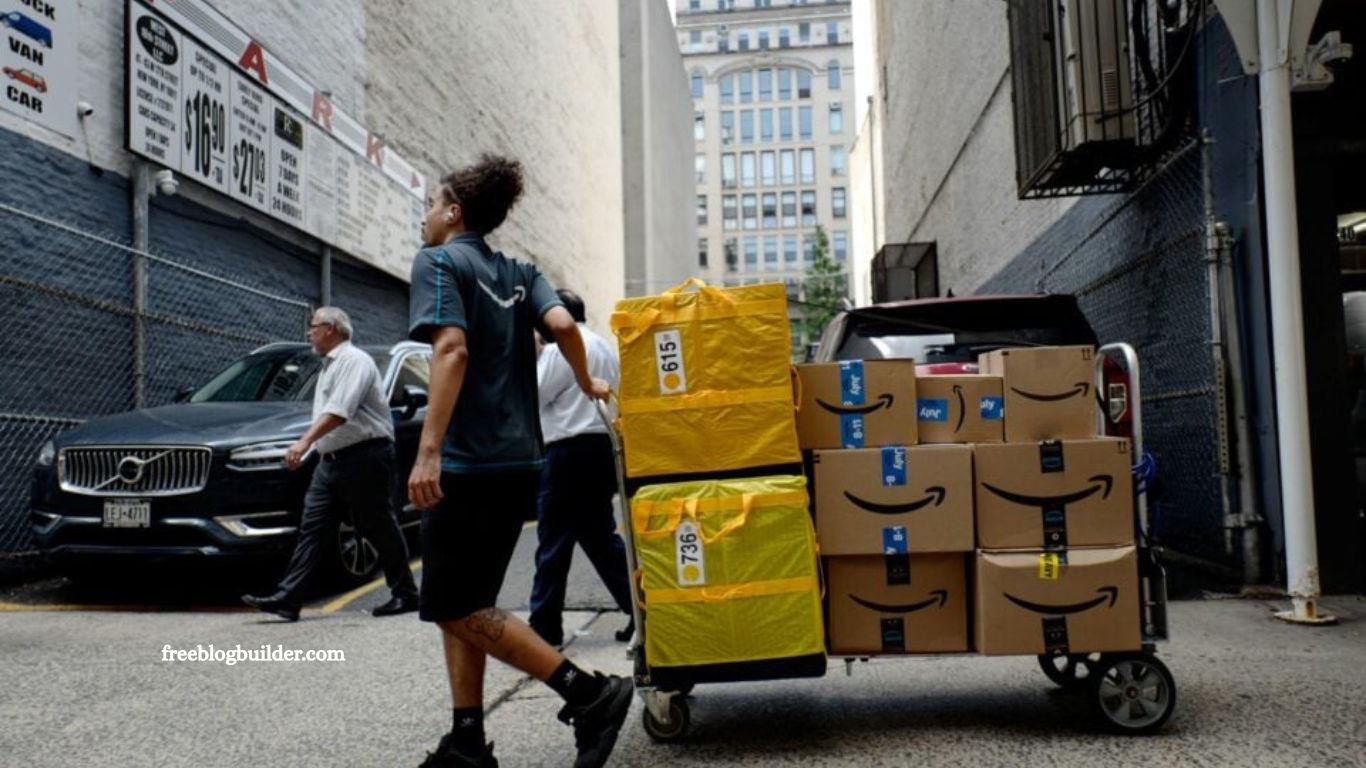Amazon’s July 2025 Prime Day has officially evolved into a four-day ordeal — stretching from Tuesday through Friday, July 11. With flashing red discount stickers and wave after wave of promoted products, what was once a 24-hour sales event has become a week-long spectacle.
Unfortunately, this extended shopping holiday has brought with it not just more deals, but more disappointment. Shoppers are increasingly questioning whether the discounts are genuine or just clever illusions.
Read More: Court Strikes Down FCC Rule Meant to Ease Subscription Cancellations
Sales Slump Sparks Controversy
Adding fuel to the skepticism, Momentum Commerce — a retail management firm representing major brands like Lego and Crocs — reported a staggering 41% drop in sales on July 8 compared to last year’s Prime Day kickoff. CEO John Shea speculated that the extended sale diminished consumer urgency. With more time to shop, customers are less likely to make impulse purchases.
Amazon quickly pushed back on the report, telling Forbes that Momentum’s numbers were “highly inaccurate” and didn’t reflect broader performance data. While Momentum itself noted a 477% increase in product sales for some items, this clash highlights the ongoing opacity surrounding Amazon’s internal sales metrics.
The Rise of Inflated Discounts
Behind the curtain of red-tag sales lies a troubling tactic: price inflation before the sale. Despite the Federal Trade Commission’s scrutiny of Amazon’s now-retired “Project Nessie” pricing algorithm, many sellers continue to jack up MSRPs before Prime Day, only to “discount” them for dramatic effect.
Example 1: The Razer Kishi Ultra
Take the Razer Kishi Ultra mobile controller — its Prime Day price is listed at $100, down from a supposed $130. However, pricing history shows it’s hovered around $120–130 for months, making the discount less impactful than it appears.
Example 2: Shark Steam Mop and Insignia TVs
Similarly, the Shark Steam & Scrub Mop is marketed as 29% off, but regularly sells for around $127, not the claimed $150 MSRP. Insignia’s 50-inch 4K LED TV, allegedly 43% off at $170, has rarely ever been listed at $300. These deceptive pricing tricks aren’t rare — they’re rampant across numerous SharkNinja and Amazon-exclusive products.
Not All Deals Are Deceiving — But Many Are Repeat Offers
It’s not all bad news. Some Apple products and the Logitech G Astro A50 headset at $250 (17% off) are genuinely competitive. Still, most of these deals are either recurring or seasonal and can be found at similar prices during other sales events throughout the year.
Sites like CamelCamelCamel and Amazon’s own Rufus AI chatbot are great tools for checking product price history. They can help shoppers avoid deals that only look good on the surface.
Products That Were Cheaper Before Prime Day
There’s an additional layer of disappointment: some items were actually cheaper before Prime Day even started.
- The Nex Playground gaming console is now $200, but it sold for $100 for months before June.
- Skullcandy Crusher wireless headphones are marketed as 46% off at $123 but were just $100 in December.
- The Acer Nitro V gaming laptop now sits at $650, but was $625 back in April, per Rufus AI.
- An MSI Katana A15 gaming laptop advertised at $1,089 was just $880 in December 2024.
Much of this inconsistency is being blamed on ongoing U.S. tariffs introduced earlier this year, causing volatile swings in electronics pricing.
What Shoppers Should Know
Prime Day may still offer value — but only for informed consumers. Be wary of inflated MSRPs, misleading discounts, and overly aggressive marketing. The red percentage icon might not be a true sign of savings but rather a signal to do your research.
To shop smarter:
- Use price tracking tools (e.g., CamelCamelCamel, Keepa, or Amazon Rufus)
- Avoid impulse purchases based solely on high discount percentages
- Compare with historical lows, not just MSRP
Frequently Asked Questions
What is Prime Day, and why is it longer in 2025?
Prime Day is Amazon’s annual sales event originally designed to offer exclusive deals for Prime members. In 2025, it has been extended to a four-day event, often referred to as “Prime Week,” in an effort to boost sales and compete with rival retailers.
Why are some deals being called “deceptive”?
Many products show inflated discounts by raising the MSRP shortly before Prime Day, making the final “deal” look more dramatic than it truly is. These price manipulation tactics can mislead shoppers into thinking they’re getting a better bargain.
Are all Prime Day deals bad?
Not all are deceptive. Some genuine deals—particularly on Apple devices or branded gaming accessories—offer competitive pricing. But most tech and household products tend to be recycled deals or previously available at similar or lower prices.
How can shoppers verify if a Prime Day deal is worth it?
Use price tracking tools like CamelCamelCamel, Keepa, or Amazon’s Rufus AI chatbot to view the product’s price history and confirm if the discount is genuine.
Why is there a reported sales drop despite the longer event?
According to Momentum Commerce, a lack of urgency caused by the longer sale period may have led to a 41% drop in early sales. Shoppers are less likely to make quick decisions when deals last multiple days.
Has Amazon responded to the criticism?
Yes. Amazon disputed third-party data and claimed that overall platform activity and engagement were strong, suggesting that external analysts lack access to the full scope of internal sales metrics.
Conclusion
What was once an eagerly awaited day of genuine discounts has become a drawn-out marketing push filled with questionable deals. With the growing length of Prime Day and the diminishing returns in savings, consumers are catching on. If Amazon wants to maintain Prime Day’s credibility, it may need to rethink how it structures — and advertises — these discounts. Until then, shoppers should keep their expectations realistic and their price trackers handy.


